- María Clemencia Herrera Nemerayema is the founder of the School of Political Education in the Colombian Amazon, which trains Indigenous people to protect their territory; her dream is to establish an intercultural university in the heart of the jungle.
- This year, the Indigenous leader won the Bartolomé de las Casas Prize from the Spanish Foreign Ministry for her work in defending Indigenous territories, based on restoring local cultures and sustainably using Amazonian resources.
- She has been working for more than 30 years to empower Amazonian women through education.
- One of the organizations she founded is Mujer, Tejer y Saberes (Women, Weaving and Knowledge), in which displaced Indigenous women based in Bogotá put their knowledge into practice to generate an income.
María Clemencia Herrera Nemerayema did not get a diploma when she finished primary school at the Santa Teresita del Niño Jesús boarding school in the municipality of La Chorrera, in the southern Colombian department of Amazonas. Instead, at her graduation, a priest gave her a Bible and a crucifix with the figure of Christ.
“This is so that one day you will convert,” he told Clemencia, who was barely 15 years old. Throughout her time in school, Clemensia had refused to forget her mother tongue, Uitoto minika. In every class she did everything possible to remind her classmates about their culture, what the Chagras — the spaces where they grew crops — were like, what the communities in her territory were like, and what the role of Indigenous Amazonian women was.
When Clemencia remembers the interaction with the priest, it makes her laugh and, perhaps, leaves her a little curious. She says she doesn’t understand why the priests and nuns who came to impose Western religion and education on that untamable territory were so insistent on demonizing Indigenous culture. She was not rebellious; she was just opposed to forgetting what was hers.
“Is that where your leadership began?” I ask her.
“I don’t know if that was the beginning of being a leader,” she answers. “I just knew that for me there was nothing else but the Indigenous people who surrounded me.”
And yes, that is how it all started.
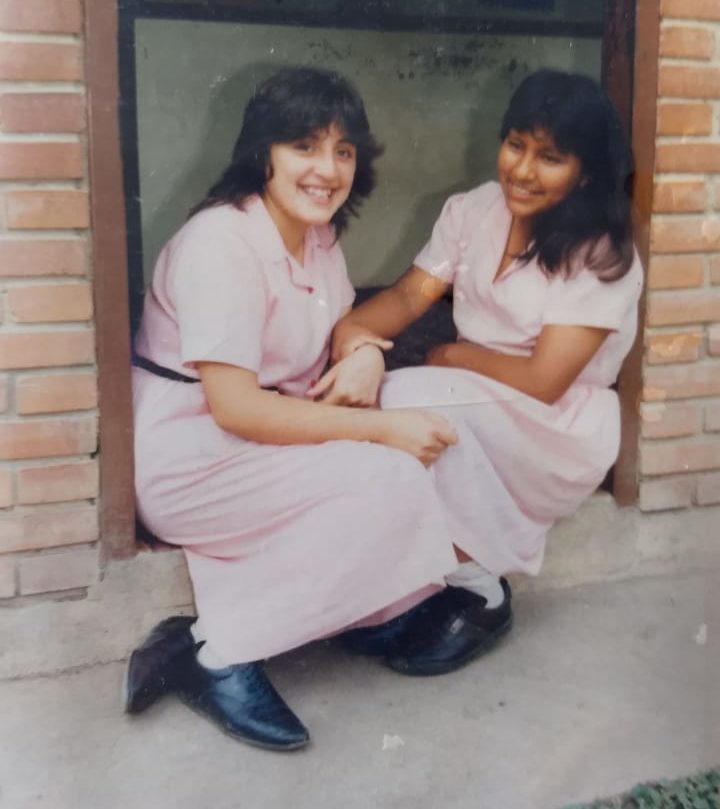
In that small school in the heart of the jungle, María Clemencia showed her spirit, refused to be mistreated, and demonstrated the strength of Amazonian women. Today, at the age of 52, Clemencia is the brains behind the School of Political Education of the Organization of Indigenous Peoples of the Colombian Amazon (OPIAC).
This initiative is supported by the Norwegian Agency for Development Cooperation (Norad), and each year it trains dozens of young people to defend their territory. It uses its own pedagogical model that reinforces the participants’ roots, reminding them of their mission to protect Mother Earth and giving them the tools to face the world. It is a space where women and men are given the same opportunities, and from which 245 young people with leadership potential graduated between 2016 and 2019.
Clemencia, from the Uitoto community (also known as the Muina Murui people), has been a voice for Indigenous people and won numerous national and international accolades for her work. The most recent came on July 23, when she received the Spanish Foreign Ministry’s Bartolomé de las Casas Prize for her work in defending Indigenous territories, through recovering local cultures and sustainably using Amazonian resources.
The accolades may be flattering, but Clemencia doesn’t let anything distract her from her big dream: to create an intercultural Indigenous university for the Amazon. “How will I do it?” she asks. She doesn’t yet know; the only thing that is clear is that she will make it happen, like everything that she had put her mind to.
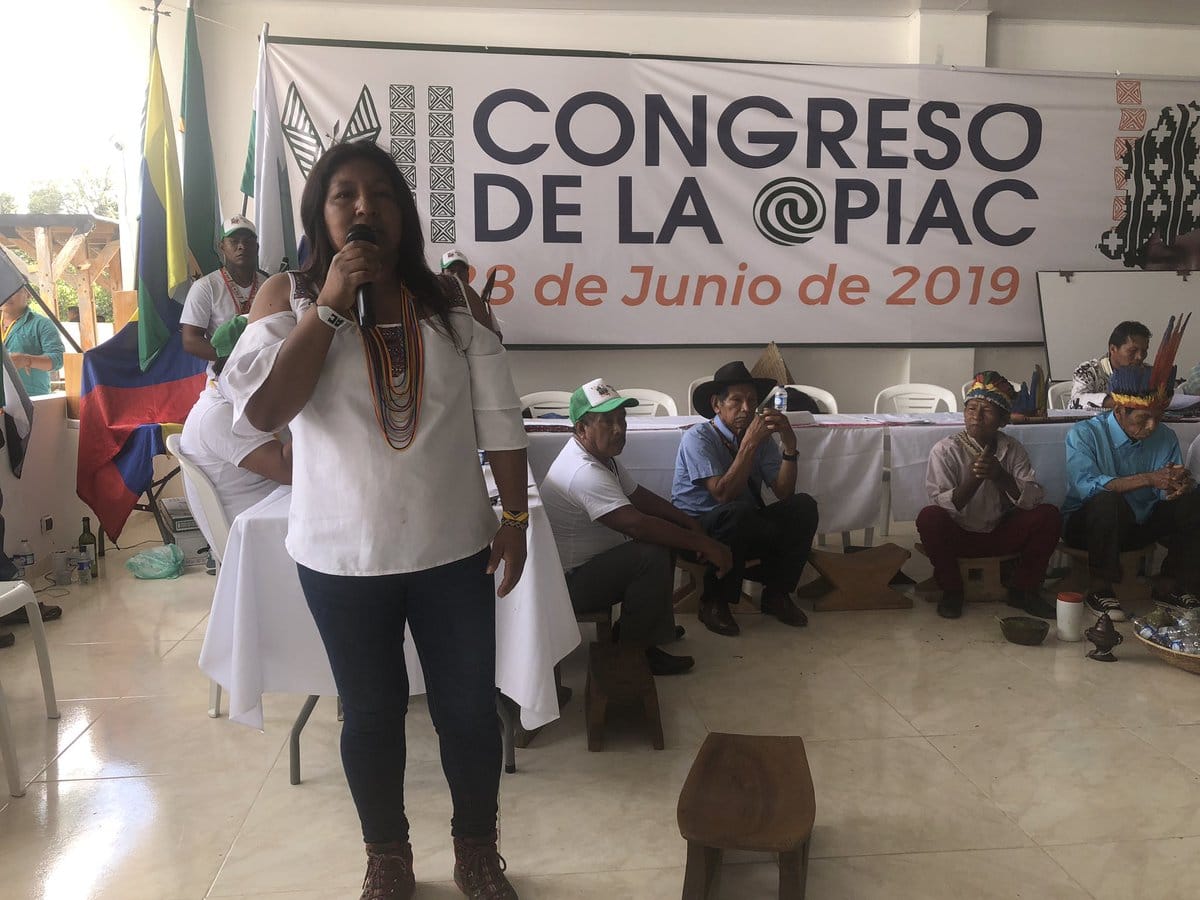
A forgotten territory
As firm and secure as her voice may sound, Clemencia betrays a certain sadness. A few months ago, her father, Eulogio Herrera, died in the municipality of La Chorrera, their ancestral territory in southern Colombia. He had contracted COVID-19. “My father died waiting for the medicine [to arrive] on the only flight that lands in those territories,” Clemencia says with a hint of resignation.
She never got to say goodbye to her father, who she remembers as a wise teacher and guide. He played a key role in the reconstruction of La Chorrera after the so-called Rubber Fever, the conflict that took place across the Amazon from 1850 until around the mid-1900s, in which almost 100,000 Indigenous people from the Uitoto, Bora, Andoque and Ocaina ethnic groups were enslaved and forced to work in rubber extraction. “My great-grandparents and grandparents were victims of this conflict,” Clemencia says. She adds she is proud that her father, Eulogio, a natural leader, helped to rebuild the town that had dwindled to fewer than a dozen houses; today, it is home to more than 3,800 Amazonians.
“I’m the fourth generation of the children of the resistance,” Clemencia says with satisfaction, visibly honored by her father’s legacy.
She falls silent for a moment, concerned about her territory. In Colombia’s Amazonas department, 117 people have died from COVID-19 as of Nov. 2, according to the country’s Ministry of Health, with more than 2,900 confirmed infections. In La Chorrera — an hour and a half by plane from Leticia, the department’s capital, and a month by river — there are 14 confirmed cases and two deaths, one of them Clemencia’s father.
For her, this is not just another statistic: it is a picture of how the state has abandoned them. It is a virus that appears to make visible the poverty of the territory for which she has worked since she was a child.
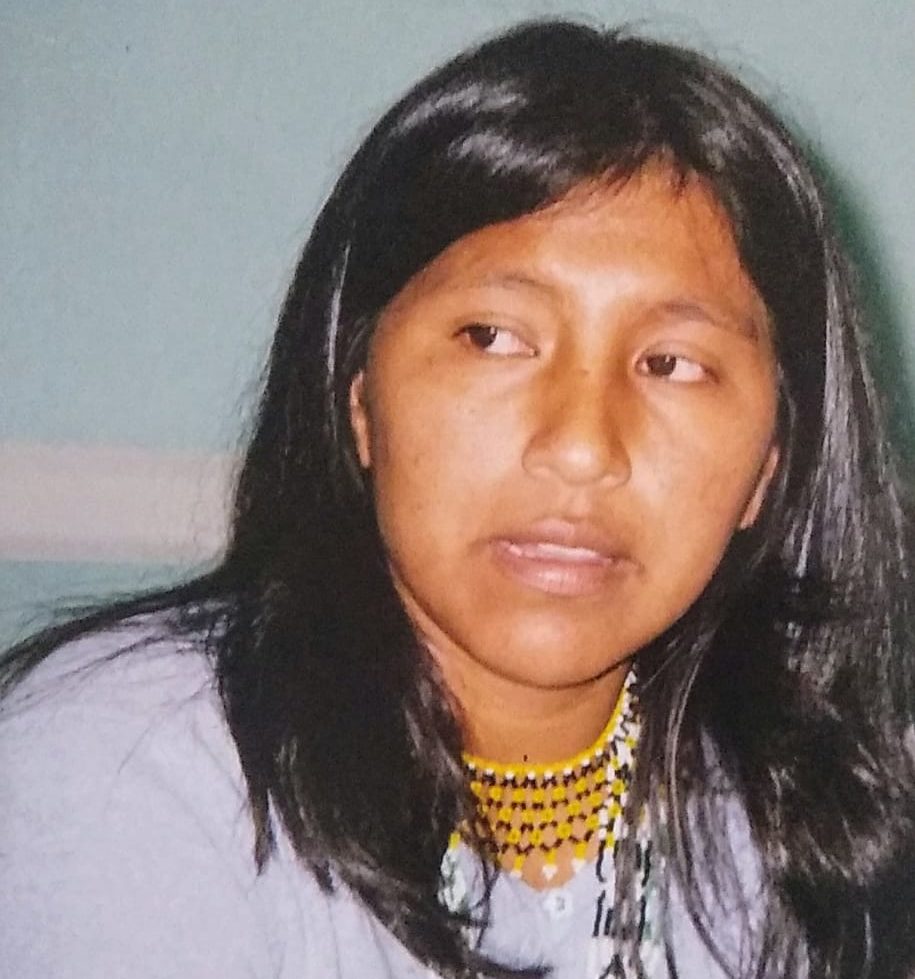
Before she turned 20, Clemencia was already advising the National Indigenous Organization of Colombia’s (ONIC) Confederation of the Upper Amazon. She accompanied the Indigenous team in the National Constituent Assembly of 1991; she served as a bridge allowing for dialogue between the communities and the illegal armed groups that came to impose their law; and she also worked on territorial planning for the Predio Putumayo reserve, a territory of almost 6 million hectares (15 million acres).
It had been taken away from the Amazonian peoples during the time of the Rubber Fever and returned to them in April 1988, when then-President Virgilio Barco told the Indigenous people, “Finally, the land that is yours, is yours.”
It is this Amazonian territory that has suffered so much that Clemencia is working for. She wants to empower Indigenous people, and because of that she speaks to them about territorial governance and the value of their origins.
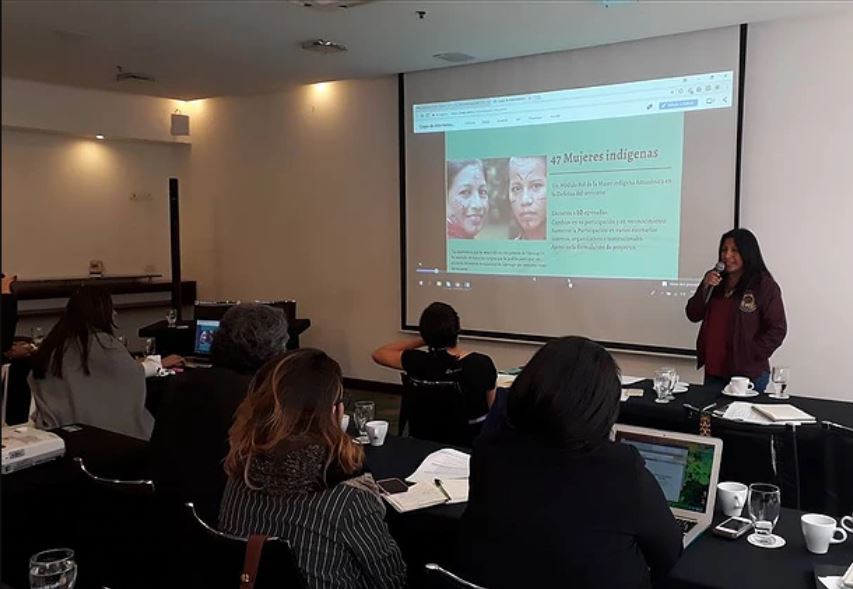
“We are one Indigenous nation,” says Mauricio Garzón, a biologist, lawyer and professor of legal pluralism at the School of Political Education, which began its classes in 2016 and where students are given the tools so that no one can step over them. “In class we teach the young people that there are more than 40 articles in the political constitution that have to do with their rights and those of their communities, plus the ones they already have as citizens. They have a multicultural constitution which they must make the their own.”
The school, supported by Rosario University in Bogotá, has four lines of training: territory and biodiversity, autonomy and political participation, customary law and legal pluralism, and audiovisual communication. Whichever area the future leaders decide on, they know they will have to apply their knowledge in the region and propose an impact project.
That is what interests Clemencia: that they see themselves as political subjects who will be part of the change.
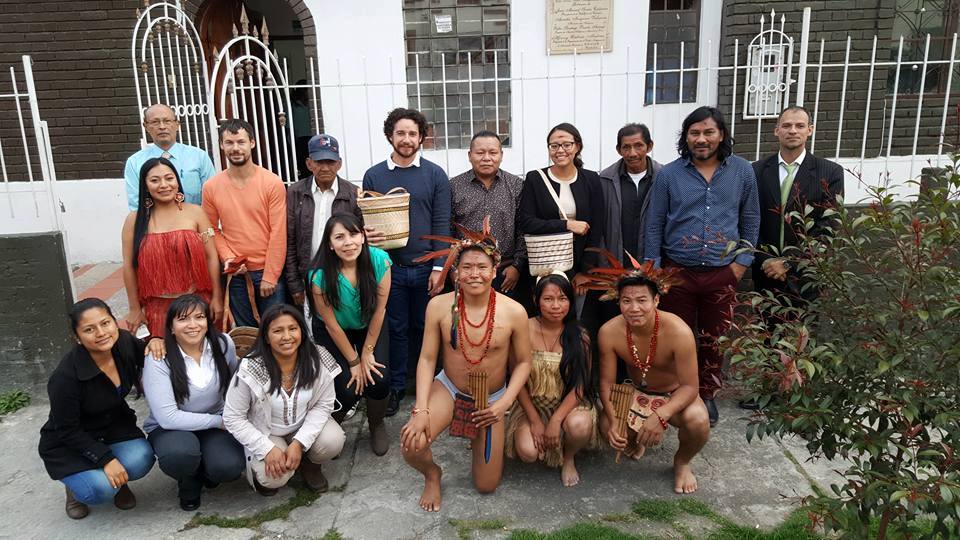
‘The most empowered Indigenous woman’
In the school, there is a module focused on explaining the role of Indigenous women in Amazonian communities. There, both men and women listen to a class while they weave. There are no exceptions. Clemencia insists on redeeming the role of women and giving them the same place as men. This has led her to deal with machismo and opposition from many.
“Women have a very important role in preserving culture, and my interest is that everyone learns to value the work that we Indigenous people do, that there is a sense of belonging and respect,” says Clemencia, adding that since she was 15 years old, she had set herself the goal of empowering women.
She also founded the organization Mujer, Tejer y Saberes (Women, Weaving and Knowledge). Known as Mutesa, it was created in 2004 as a space where displaced Amazonian women, based in Bogotá, could put their ancestral knowledge into practice to generate an income, reinforce the values of the communities from which they come, and avoid being discriminated against. “Clemencia is a champion of productivity, so she put them to work on their own initiatives,” says Claudia Duarte, a social worker, friend and colleague of the Indigenous leader.
The organization runs a restaurant serving traditional dishes, a crafts center, and even a clothes studio where designs are created that revive Amazonian culture. “I built a space where women artisans learn to make their own economy and generate an income,” Clemencia says. “It’s very important because they have needs but don’t have resources.”

All initiatives are accompanied by training and education, the greatest tools for generating change, according to Clemencia. This idea, which has nested in her head, has been strengthened since she began working with Amazonian women in the form of a 2008 Constitutional Court measure implemented to protect the rights of displaced women. She visited their villages and confirmed that a large majority of Indigenous women felt that their collective and individual rights were being violated.
It was then that she began fighting to guarantee them access to political participation and education. And it was from there that the School of Political Education took shape in her mind, a space that although initially intended only for women, later also welcomed men in pursuit of equity.
All of Clemencia’s initiatives have created spaces for reflection with men, and although there has been no lack of confrontation, she is always fortunate to be accompanied by grandfathers and grandmothers who recognize, says Claudia, “that many women are abused and mistreated.”

“Indigenous women are just beginning a leadership process, since men are always given the opportunity to participate,” says Célida Valencia, a native of the Cubeo community in Vaupés who completed her studies in business administration and last year trained at the School of Political Education. “It is difficult, but our teacher Clemencia has taught us that it can be done. She is the most empowered Indigenous woman I know.” For Célida, 25, the most difficult challenge facing Indigenous women is to study without forgetting their roots. “It’s about finding a balance,” she says.
Célida at first did not know how to do it, but Clemencia showed her that it was possible. She convinced her to train herself without abandoning her role in preserving culture and life, and without leaving behind the work in the chagras, that diverse space where communities cultivate crops and have a spiritual exchange in which they show their gratitude to the land. “The knowledge of Indigenous women is transmitted through the chagra. Everything that feeds us springs from there,” Clemencia says. “It’s the center of life, it’s the image of a woman or an Indigenous Amazonian community.”
It was between the chagras and the jungle that Clemencia spent her childhood and adolescence. She still remembers how to sow the seeds and boasts of being a good fruit picker. She knows the practices of cutting down, burning, sowing and harvesting. But she also stresses that her communities have always done this with respect and that all land is reforested with fruit trees from the territory to ensure there is food for future generations and the animal species with which they live in that lung of the world.
“We Amazonians will never leave and nor will we leave a piece of land abandoned,” she says vehemently, challenging those who seeking to destroy the forest. Between January and April 15 of this year alone, the Foundation for Conservation and Sustainable Development (FCDS) recorded 75,031 hectares (185,406 acres) of deforestation in the Amazon.
That figure, in just over three months, amounts to three-quarters of the total deforestation in that region for all of 2019, when 98,256 hectares (242,796 acres) of forest were lost, according to the latest report from the Institute of Hydrology, Meteorology and Environmental Studies (Ideam).
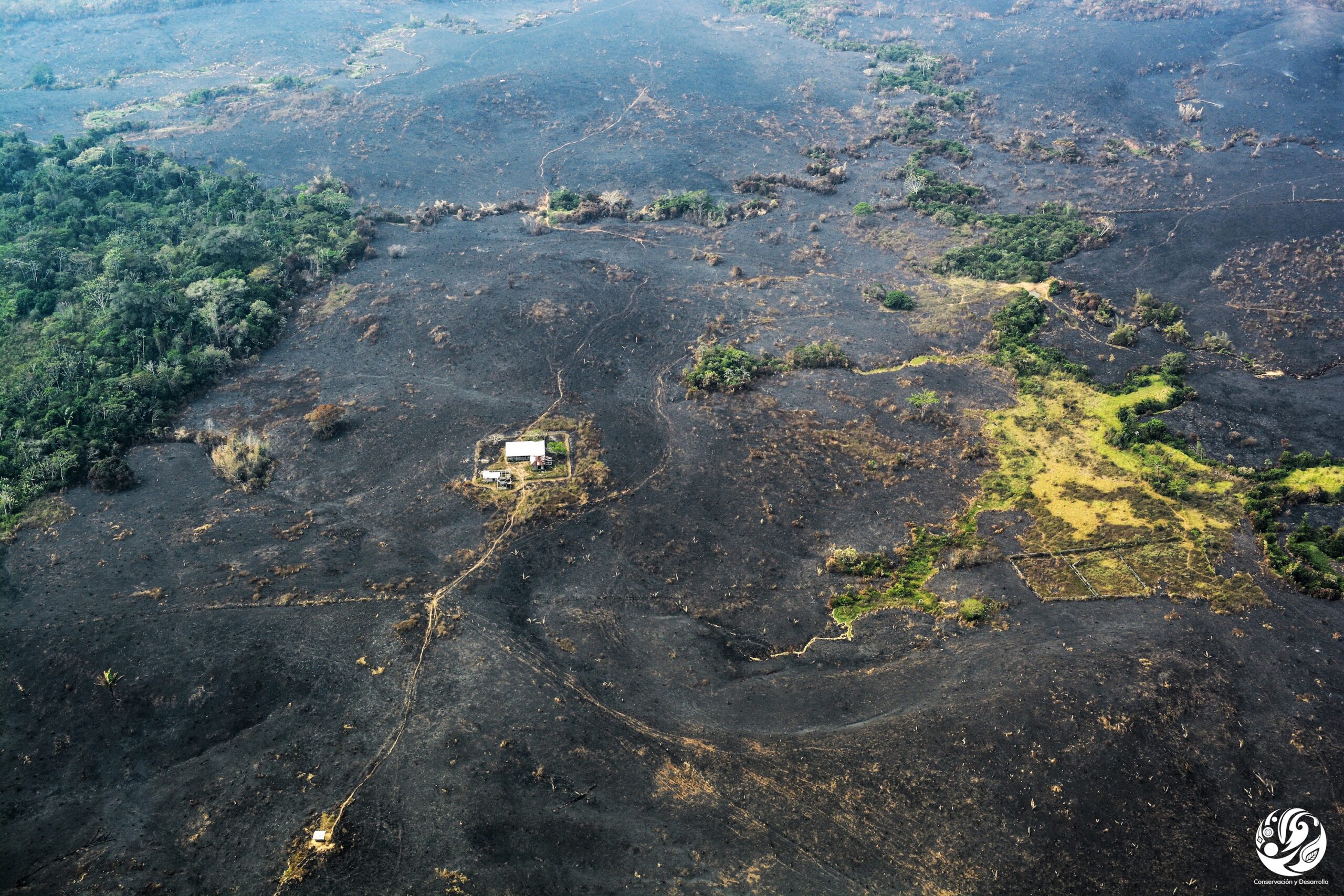
In defense of life
María Clemencia has managed to surround herself with an entourage that supports her in her struggle. This includes Marcelo Muñoz, an Indigenous teacher from the Tatuyo community of Vaupés department, who teaches a module in the training school on the ancestral territories. “In class we talked about what they imposed on us, how the Western world conceives things and how we conceive them,” he says, reiterating that the main problem of Westerners — referring to non-Indigenous people — is to conceive of the territory as a physical space from which they can profit, and not as a living being “that feeds and nourishes us.”
Muñoz, who has been teaching for 15 years, is part of a team putting together an intercultural and rural educational model for Guaviare, an Amazonian department with a high rate of deforestation. “There they cut down the forest to place two cows and say they are cattle ranchers. This concept must change. The Amazon is threatened because they don’t conceive of the territory as a living being, they think it’s an inert entity,” Muñoz says.
And he is right: according to Ideam, Guaviare is the department with the third-highest level of deforestation in Colombia, after Caquetá and Meta. That’s why leaders are needed who will promote change for their region, who won’t subvert themselves and who are willing to face whatever is put in front of them, “like Clemencia, who fights to preserve ancestral ways of thinking,” Muñoz adds. “A teacher who seeks equity and the preservation of life itself.”
Clemencia says she is aware of everything that she has accomplished, but she still blushes to hear so much praise. She humbly acknowledges her influence on many of the school’s young graduates who today see themselves as agents of change. “I work so that they can converse with the elders and they don’t lose our ways of life or traditions, so that they learn to take ownership of their culture and feel proud of their roots,” she says.

One of her former students is Héctor Yucuna, who managed to bring together the 2018 and 2019 graduates to ask OPIAC to create, for the first time in 25 years, an organization of young people who want to save the Amazon. He succeeded and is now the one who leads it.
“We will soon hold an assembly to talk about what young people think about health, education, extractivism, political participation and climate change,” Yucuna says with conviction, emphasizing that they cannot allow the continued extraction of minerals and oil from their territories. “From there we will come up with a timetable and a work plan.” He says he believes this is his mission: “This was taught to us by the leader Clemencia, an example of resistance and leadership.”
His concern is well justified. A report, “Oil in the Amazon: Indigenous Peoples in Danger?”, by the Environment and Society Association, shows that in the basin between Caquetá and Putumayo there are currently 51 contracts for technical studies of the area, exploration, and exploitation of hydrocarbons, held by 16 national and international companies. This not counting the areas available to be allocated. This basin, located in the Amazon region, according to the report, produces 2.9% of Colombia’s total crude oil. It has enormous potential, and the National Hydrocarbons Agency (ANH) estimates that the reserve contains around 3 billion barrels of oil.

“I know the consequences of these projects. I have seen Indigenous peoples displaced and without territory because of the extraction of hydrocarbons. We will continue fighting with the government for prior consultations,” Yucuna says.
He adds he is determined to fight, just as he learned in the School of Political Education. He recognizes that it’s not easy, especially because of the armed groups that move through their territories and come to impose their law. “Many who have opposed this business have been killed,” he says. Perhaps that is the greatest fear. María Clemencia herself recognizes this and knows that in a country like Colombia it is quite a feat to be an environmental or social leader.
A recent report by Global Witness recorded that, last year, 212 environmental defenders were murdered around the world. In first place with the highest number of murders was Colombia (64), followed by the Philippines (43), Brazil (24), Mexico (18) and Honduras (14). In the case of Colombia, that figure is more than double the number of murders recorded by Global Witness in 2018.

A university embedded in the jungle
What struck Clemencia the most during her time at the boarding school where she finished elementary school was seeing teachers who did not speak her language and who forced the Indigenous people to live a life that did not belong to them. She refused to give up her culture. This conviction has stayed with her, even after the nuns sent her to high school in the municipality of Viotá, Cundinamarca.
Neither the change of climate nor the concrete that replaced the trees of that thick and humid jungle made her forget the territory where she grew up with her four siblings. Everything she learned in school she put into practice with her communities, and she looked forward to one day creating a school of her own that would depart from the traditional model. And she succeeded.
She was with the School of Political Education that she founded until December 2019, when, at the seventh OPIAC congress, which is held every four years, it was decided that all the directors would be changes. “It’s the hardest blow she’s received, but I’m sure it will push her further,” says Claudia Duarte, her friend. She is right: nothing stops Clemencia.
Today, with her organization Mutesa, this expert leader in Indigenous peoples’ law from University Carlos III in Madrid accompanies 250 Amazonian women who want to study. She encourages them to validate their high school diplomas and continue with their professional training.

She knows that for now she will not continue in the School of Political Education, and instead will concentrate her energies on continuing to study intercultural law at the Indigenous University of Cauca. She will also join forces to set up the university in the heart of the jungle, a project that is ready on paper. She is convinced that intercultural education will be the greatest weapon to take care of the Amazon and its peoples.
“Clemencia has a very strong advocacy capacity, it is a skill that not all Amazonian people have, and with which she will continue to achieve her goals,” Claudia says. Clemencia doesn’t deny it. She knows that she only needs a couple of seconds to start talking to capture the attention of everyone around her. With her words and her berraquera — her strength of character — she hopes to continue opening doors.
“The Indigenous university is another child. It’s my life, it’s my dream,” Clemencia says.
“When will you achieve it?” I ask.
She doesn’t know precisely; the only thing she is clear about is that it will happen. Nobody doubts it, because “persistent” and “fighter” are the two most repeated words from those who try to define her.
Hear more via Mongabay’s podcast: “In the Amazon, women are key to forest conservation” here:
Banner image: Original illustration of María Clemencia Herrera Nemerayema as created by Los Angeles-based artist Marlene Solorio for Mongabay. You can find out more about the artist on Instagram at @m2rl3n3.
